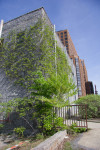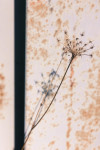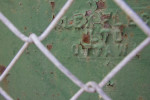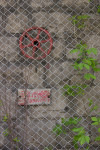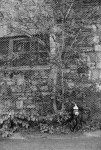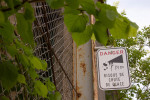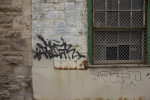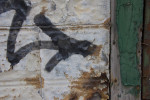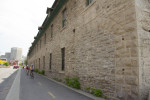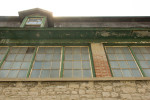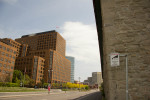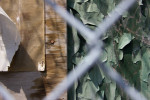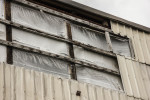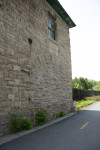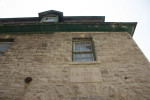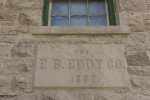Another glorious day working outside, this time photographing a series of attached buildings beginning on the corner of Rue Eddy & Boulevard Alexandre-Tache. The mostly stone buildings are encased in high chain link fencing, held tight by cross-wires and reinforced by steel posts and beams endeavouring to keep all the bits together. Bill worked the overview from across the street and I shot details, dancing with the thousand or so cyclists who apologized, ducked and rode around me and my tripod on the sidewalk cycling path.
Today’s theme was texture and patina, the kind of patina you pay thousands of dollars for on new pieces of furniture masquerading as DIY Brooklyn Boho. Changes in texture marked the transition in buildings, in age, in style, in charm factor.
I saw curly emerald paint swaths, flaking, embossed tin tiles vertically installed on building fronts, metal fascia and eaves and dormers one after another still plumb, level and square, fragile, dangling clapboard stripped by countless days of sun, rain, snow, and wind, creeping nature, fractured glass panes, warped window screens, stone window sills with crumbling peaks of sand in the corners, folds of unsuitable stone installed in a place where it doesn’t belong.
On the very northwest corner at the end of the building series, I discovered the prize at the bottom of the Cracker Jack box: a carved stone plaque reading The E.B. Eddy Co. 1892 and below, a ghostly stone arch, now infilled but boasting the visible remains of carriage door hardware. Easy to miss with its subtle change in stone type and colour and the plaque placed so far above eye level. I only noticed because I was looking through my ‘camera eye.’
Cataloguing these buildings I fully appreciate they are the real deal: They are history made manifest, irreplaceable, invaluable and the backbone of Ottawa’s post-contact built history. New buildings can be gorgeous and satisfying in their own way, but they aren’t this.
Further reading:



